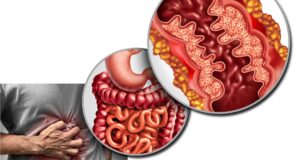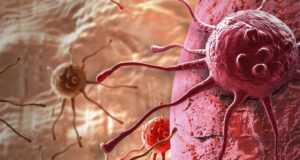_-_Illustration_-_Andrii_Vodolazhskyi_M1_.jpeg)
A joint research group team led by Sayuri Tsukahara and Tetsuji Kakutani of the University of Tokyo has clarified a mechanism of how retrotransposons, genetic elements that can “jump around” chromosomes and are known drivers of evolution, preferentially insert in the centromere. The findings were published in the journal Nature.
The centromere is the thinnest part of the chromosome that divides it into a long and short arm, much like how the waist separates the upper and lower body. Its role in transmitting information via cell division has been preserved across eukaryotes, cells with membrane-bound nuclei. This is despite the substantial inter- and intraspecies variations in its DNA sequence, a phenomenon called the “centromere paradox.” Researchers have known that retrotransposon insertion in the centromere has contributed to this variation and rapid evolution. However, the mechanisms of insertion have not been known. To fill the gap, the researchers investigated the insertion mechanisms of retrotransposons Tal1 and EVD in the plant Arabidopsis lyrata, commonly known as lyrate rockcress.
We have long known that a large portion of the eukaryotic genome consists of transposons concentrated around the centromere. However, what biases their distribution and what their role is in the centromere had not been known. Investigating the mechanisms of retrotransposon integration may reveal how evolution “constructed” eukaryotic genomes.”
Sayuri Tsukahara, first author
Until recently, reference centromere data for Arabidopsis and many other organisms did not exist. However, thanks to recent advances in DNA sequencing, such reference data could finally be collected, making this study possible. The researchers also employed a method previously developed by some of the co-authors of this paper, created to detect retrotransposon insertions with great efficiency (TEd-seq). Combining these two technical improvements, the researchers could “read” the insertion sites and map the results onto the centromere region of the reference data more accurately.
“We were surprised at the TEd-seq results,” Tsukahara remembers, “because retrotransposon Tal1 and EVD showed strong integration biases. Tal1 integrated into the centromere, with almost no insertions in the chromosomal arm region. On the other hand, EVD integrated into the chromosomal arm, although EVD is closely related to retrotransposon Tal1.”
As an additional discovery, the researcher found these insertion biases reversed when they swapped a certain region (c-terminal integrase region) of the two retrotransposons. With this sign that nature has many more tricks up its sleeve we do not yet appreciate, Tsukahara describes potential next steps for research.
“We were amazed by the sophisticated integration mechanisms of retrotransposons. We would love to explore in more detail the mechanisms of centromere-specific integration of retrotransposon Tal1. For example, we would like to identify the factors that bind to Tal1 and investigate whether there is a bias in transmission to Tal1-contained centromere to offspring. It may lead to revealing the impact of retrotransposon insertions into centromere.”
Source:
Journal reference:
Tsukahara, S., et al. (2025). Centrophilic retrotransposon integration via CENH3 chromatin in Arabidopsis. Nature. doi.org/10.1038/s41586-024-08319-7.




